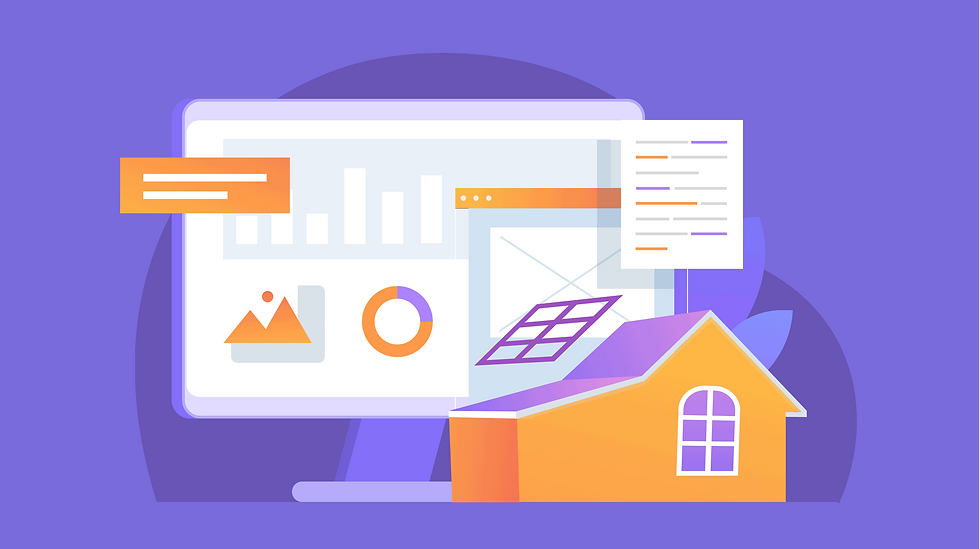The Power of Retargeting: How to Win Back Lost Customers
- Inspired Connection Agency

- Feb 27
- 5 min read
Updated: Apr 19
Many businesses invest heavily in digital advertising to attract new customers, yet a large percentage of website visitors leave without making a purchase or taking action. Retargeting is a powerful strategy that helps businesses reconnect with these lost customers, keeping their brand top-of-mind and increasing conversion rates.
An effective paid media strategy should include retargeting as a core component, ensuring that potential customers who have already shown interest in a product or service are encouraged to return and complete their purchase. This guide will explore the power of retargeting, explain how it fits into a Facebook and Google Ads strategy, and provide actionable steps to optimize retargeting campaigns for better results.

What is Retargeting?
Retargeting, also known as remarketing, is a digital advertising technique that targets users who have previously interacted with a website, app, or online store but did not complete a desired action, such as making a purchase, signing up for a newsletter, or filling out a contact form.
By displaying ads to these users across different platforms, businesses can re-engage potential customers, remind them of their previous interest, and encourage them to take the next step.
How Retargeting Works
A user visits a website but leaves without converting.
A tracking pixel or cookie captures the visitor’s behavior.
The visitor is added to a retargeting audience.
Ads are displayed to the visitor on various platforms, such as Facebook, Google, and other websites.
The visitor clicks the retargeted ad and returns to complete their purchase or action.
Why Retargeting is Essential for a Paid Media Strategy
Retargeting is one of the most effective digital advertising strategies because it focuses on warm leads—people who have already expressed interest in a product or service. Instead of spending marketing dollars on cold audiences who may have no prior awareness of a brand, retargeting ensures that ad spend is directed toward high-potential customers.
Key Benefits of Retargeting
Increases Conversion Rates: Retargeted customers are more likely to convert than first-time visitors.
Maximizes Ad Spend Efficiency: Advertising to users who have already interacted with a brand reduces wasted spend.
Enhances Brand Recall: Consistent exposure to a brand keeps it top-of-mind for customers.
Re-engages Abandoned Cart Users: Many shoppers abandon their carts before checkout; retargeting helps bring them back.
How to Implement Retargeting in a Facebook and Google Ads Strategy
Retargeting can be executed through multiple platforms, with Facebook and Google Ads being two of the most effective options.
Retargeting with Google Ads
Google Ads offers remarketing options that allow businesses to re-engage visitors across the Google Display Network, YouTube, and search ads.
Google Ads Retargeting Strategies
Standard Display Retargeting
Displays banner ads on websites within the Google Display Network to users who previously visited a site.
Remarketing Lists for Search Ads (RLSA)
Targets previous visitors when they conduct new searches related to a brand’s products or services.
YouTube Video Retargeting
Shows ads to users who have interacted with a brand’s YouTube channel or videos.
Dynamic Remarketing
Displays ads featuring specific products or services that users viewed on a website.
Retargeting with Facebook Ads
Facebook offers sophisticated retargeting options through Custom Audiences, allowing businesses to re-engage users on Facebook and Instagram.
Facebook Ads Retargeting Strategies
Website Retargeting
Targets users who have visited a website but did not convert. Requires the Facebook Pixel to track visitor behavior.
Engagement Retargeting
Targets users who have engaged with a Facebook or Instagram page, watched a video, or interacted with a post.
Customer List Retargeting
Uses a company’s email list to serve ads to previous customers or leads.
Dynamic Retargeting
Displays personalized product ads based on users’ previous interactions with an online store.
Both Google and Facebook retargeting work best when combined, as they allow businesses to reach lost customers across different touchpoints.
Best Practices for an Effective Retargeting Campaign
1. Segment Audiences for More Personalized Ads
Not all lost customers are the same. Segmenting audiences based on behavior ensures that the right message is delivered to the right users.
Cart Abandoners: Show personalized ads reminding users of their unpurchased items.
Product Viewers: Retarget users who browsed a product but did not add it to the cart.
Past Customers: Promote complementary products to previous buyers.
2. Use Frequency Capping to Prevent Ad Fatigue
Overloading users with the same ads can be counterproductive. Set a frequency cap to limit how often a retargeting ad is shown to the same user.
Facebook allows advertisers to control ad frequency through Ad Set Delivery Optimization.
Google Display Network allows impression capping to prevent excessive ad exposure.
3. Optimize Ad Creative and Messaging
The messaging in retargeting ads should align with the user’s previous interaction with the brand.
Cart Abandonment Ads: Offer limited-time discounts or free shipping.
Content Retargeting Ads: Encourage users who read a blog post to download a related whitepaper.
Brand Awareness Ads: Use testimonials and customer reviews to reinforce credibility.
4. Adjust Bid Strategies for Higher-Intent Users
Users who have added items to a cart are more likely to convert than users who simply visited a homepage. Adjust bids accordingly to prioritize high-intent users.
Increase bids for users who abandoned a cart within the last 7 days.
Decrease bids for users who have not engaged in over 30 days.
5. Test and Optimize Performance Regularly
Retargeting campaigns require continuous testing and optimization to achieve the best results.
Run A/B tests with different ad creatives and calls to action.
Monitor cost per conversion and return on ad spend (ROAS) to measure effectiveness.
Adjust targeting based on audience engagement trends.
Common Retargeting Mistakes to Avoid
While retargeting can be highly effective, common mistakes can reduce its impact.
Overwhelming Users with Too Many Ads: Excessive exposure can lead to frustration and ad blindness.
Failing to Exclude Converted Users: Ensure ads do not target users who have already completed the desired action.
Using Generic Messaging: Personalization is key; retargeting ads should match user behavior.
Not Aligning Ads with Landing Pages: Ensure the ad directs users to the most relevant page based on their previous interaction.
Avoiding these mistakes will help businesses maximize the effectiveness of their retargeting campaigns.
Retargeting is one of the most powerful tools in a paid media strategy, allowing businesses to re-engage lost customers and drive higher conversions. By leveraging Facebook and Google Ads retargeting, businesses can deliver personalized ads to users who have already shown interest, increasing the likelihood of a sale or lead conversion.
By segmenting audiences, optimizing ad creatives, managing ad frequency, and continuously testing performance, businesses can refine their retargeting efforts and achieve stronger results.
If you need expert guidance on how to improve your Facebook and Google Ads strategy, reach out today to ask us any marketing questions you may have.




Comments